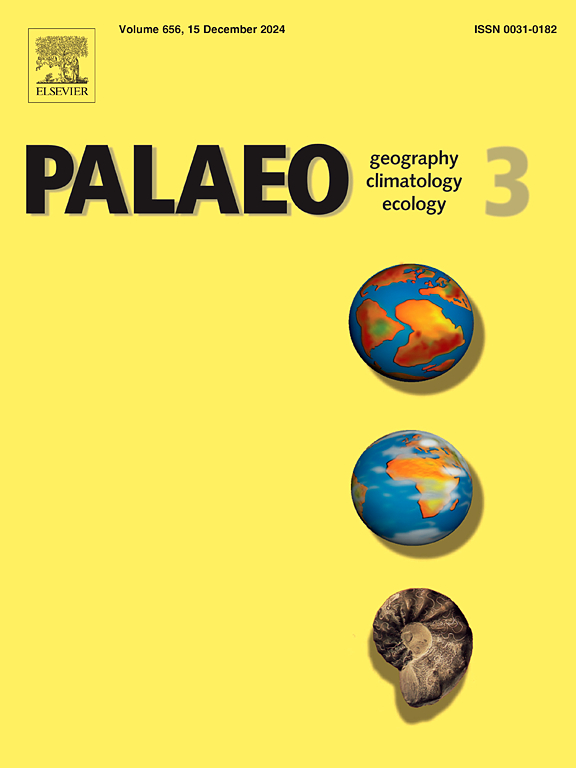Latest Oligocene (late Chattian) environmental transitions revealed by plant-insect interactions preserved in plant assemblages from Wind Brickyard, Eger, Hungary
IF 2.6
2区 地球科学
Q2 GEOGRAPHY, PHYSICAL
Palaeogeography, Palaeoclimatology, Palaeoecology
Pub Date : 2025-02-20
DOI:10.1016/j.palaeo.2025.112828
引用次数: 0
Abstract
Plants and insects are fundamental components of terrestrial ecosystems; evidence of their interactions (preserved as trace fossils on leaves) provides valuable insights into past environments. The Wind Brickyard succession in Hungary (Central Paratethys), of latest Oligocene age, offers a rare opportunity to study well-preserved evidence of plant-insect interactions and palaeoclimate across three plant-bearing intervals. Coinciding with the Late Oligocene Warming Event and the onset of the Miocene Glaciation, the Wind Brickyard assemblages capture palaeoecological responses to climate change, filling a critical knowledge gap in European palaeoecosystems. By integrating herbivory analysis and CLAMP-based palaeoclimate reconstructions, this study contributes to our understanding of how palaeoenvironmental and palaeoclimatic factors shaped latest Oligocene biodiversity over time. In this study, a total of 1310 fossil leaves from three different stratigraphic intervals were analyzed. Thirty-three, mostly generalized, damage types were documented. The greatest damage frequency and richness occurred in the upper of the three levels, which is represented by mainly azonal elements of riparian and swamp vegetation. This higher proportion of specialized insect damage is connected to elements of the zonal vegetation. These findings suggest that environmental changes and host plant zonality influenced the greater damage richness and frequency in the upper layer, highlighting significant ecological shifts close to the Oligocene-Miocene boundary.
求助全文
约1分钟内获得全文
求助全文
来源期刊
CiteScore
5.90
自引率
10.00%
发文量
398
审稿时长
3.8 months
期刊介绍:
Palaeogeography, Palaeoclimatology, Palaeoecology is an international medium for the publication of high quality and multidisciplinary, original studies and comprehensive reviews in the field of palaeo-environmental geology. The journal aims at bringing together data with global implications from research in the many different disciplines involved in palaeo-environmental investigations.
By cutting across the boundaries of established sciences, it provides an interdisciplinary forum where issues of general interest can be discussed.

 求助内容:
求助内容: 应助结果提醒方式:
应助结果提醒方式:


